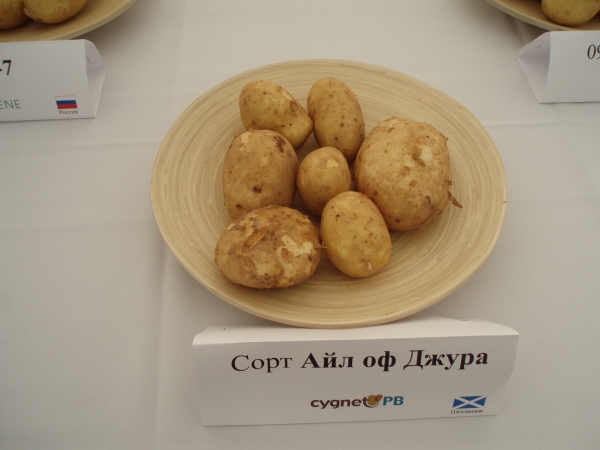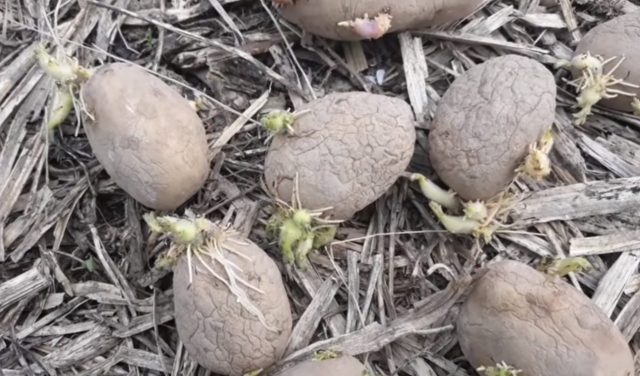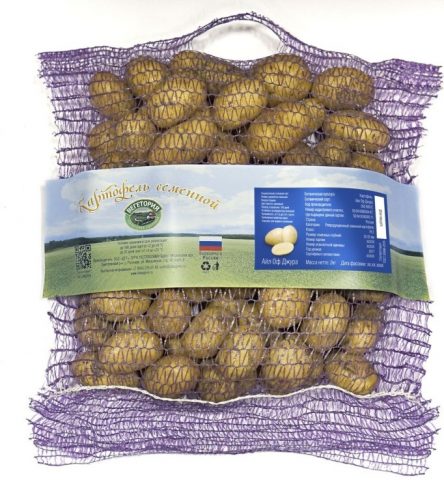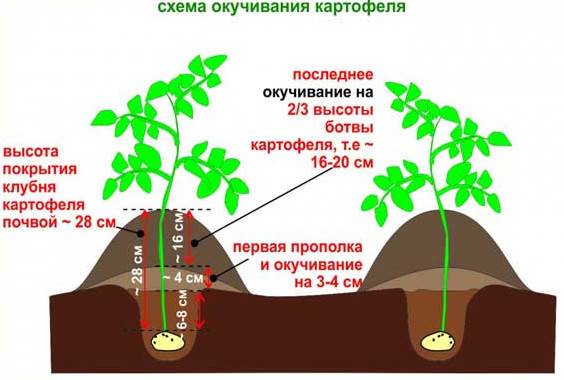Content
Reviews of Dzhura potatoes from those gardeners who bought branded seeds and grew the Isle of Dzhura variety are the most positive. After heat treatment, the tubers of the table type have a pleasant taste and consistency. The plant is not very susceptible to common diseases.
Description of the variety of potatoes Jura
Isle of Jura is the development of breeders from the UK. In the State Register of the country it has been located since 2007, besides a foreign company, the domestic originator of the variety, New Potato LLC from the Moscow Region, is named. Medium-sized Jura bushes of an intermediate type, with strong, semi-erect stems. Large leaves of dark green color with slightly wavy edges. In June, flower stalks grow on separate stems of the Jura variety. Corollas are white, large.
Oval tubers of the Jura potato variety, as seen in the photo, are elongated. The eyes are sparsely located, small, small. Smooth yellow-beige peel, thin after digging up, gradually coarsens during storage. Light sprouts are thick, whitish. The pulp is creamy yellowish, which indicates the presence of a large amount of beta-carotene in the composition.
Dzhura tubers for table use belong to culinary type BC:
- universal;
- moderately mealy;
- the pulp is slightly soft.
Depending on the cultivation technique and weather conditions, the starch content in medium early potatoes ranges from 12 to 16%. The figures correspond to the average values for the level of accumulation of the substance, on which the digestibility of the tuber depends. The tasters gave the variety a taste rating of 4 to 5 points.
Pros and cons of Jura variety
The potatoes have shown themselves to be high-yielding and hardy in cool summers, frequent precipitation, typical for the regions of the Central Region, where the variety is recommended for cultivation. Tubers form quickly and gain weight. The variety begins to be dug after 65-80 days from germination. Over the years of cultivation, gardeners have compiled a list of the advantages of Isle of Jura potatoes:
- early production;
- good yield in the group of mid-early varieties;
- high presentation of tubers;
- excellent keeping quality;
- versatility;
- pleasant taste of dishes;
- unpretentiousness to weather conditions in central Russia;
- resistance to a number of diseases.
If the disadvantages include a specially selected breeders undemanding to rather harsh weather conditions, then the disadvantage of this variety is that it is not adapted to droughts. Isle of Jura is the brainchild of Scottish agronomists, where plots are more likely to suffer from heavy rainfall rather than dry periods.
Planting and caring for Isle of Jura potatoes
You need to plant and grow the variety according to standard agricultural techniques. Potatoes develop well after last year's plantings of any cereals, legumes and melons, as well as after cabbage, beets, carrots.
Selection and preparation of the landing site
For the Isle of Jura potato variety, the plot is prepared in the fall, enriching each square meter with nutrients:
- before plowing, 6-8 kg of humus or manure are applied;
- 30 g of superphosphate;
- humus can also be added before spring cultivation;
- directly during planting, 130-180 g of wood ash is placed on the bottom of the hole.
Preparation of planting material
Dzhura potato tubers, according to the description of the variety, photos and reviews, form strong light sprouts after special preparation. A month before planting, seed potatoes are raised from cellars into the light for germination. Tubers are laid out in 2-3 layers in wooden, plastic boxes and placed in a bright, cool room. The temperature should not rise above + 14-15 ° C so that the sprouts do not stretch out. After correct vernalization, the sprouts reach 0.5-1.2 cm.
Landing rules
In an effort to get a rich harvest of the Jura variety, they adhere to the generally accepted rules:
- planting is carried out when the soil at the potato placement depth warms up to 10-12 ° C;
- on structured loam and sandy loam, the depth of the hole for the medium early variety is 8-10 cm;
- on heavy clay soils, Jura potatoes are planted at a depth of 5-6 cm;
- the optimal layout for a small bush Isle Of Jura - 50x60 cm;
- the location of light sprouts during planting does not affect the potato yield.
Watering and feeding
Judging by the characteristics of the variety and reviews of the Jura potatoes, the moisture-loving culture is regularly watered if there is not enough rainfall:
- the beginning of watering - in the phase of 13-15 cm of stem height, 2.5-3.5 liters for each plant;
- when buds are formed, the bushes are watered in 6-7 liters;
- during the period of tuber formation, they already give 10-12 liters.
Organic fertilizers are not enough for a good yield of the Jura variety. Potatoes are fed with complex mineral and organomineral fertilizers:
- "AVA";
- "Kemira";
- "Kristalon";
- "WMD";
- "Bulba" and others.
Foliar dressing is carried out after the first watering or earlier. For processing on the leaves, prepare a mixture in 10 liters of water:
- 90-110 g of urea;
- 150 g of potassium monophosphate;
- 5 g of boric acid.
After 2-3 weeks, they are fed again in the same way, but in a greater concentration - for 5 liters of water.
Loosening and weeding
Potato plantings are regularly looked after. After watering, the soil is loosened with light tools without damaging the tubers. Weeds removed.
Hilling
In the characterization of Dzhura potatoes, it is emphasized that the variety is moisture-loving. Hilling will help create a comfortable environment for the tubers to gain weight. Hilling on wet soil, forming ridges around the bush. Sometimes combs are made with a stem height of 3-5 cm in case of a threat of frost. Hilling is carried out 2-3 times, before flowering.
Diseases and pests
Jura potatoes are resistant to cancer, common scab, black leg and late blight of tubers, not affected by golden nematode. If the phytophthora fungi begin to spread early, the plants may suffer. Recommended prophylactic spraying with fungicides "Oksikhom", "Ridomil".
To protect the tubers from wireworms and scoops, remove weeds around the potato area. For aphids and whiteflies, insecticides are used. Colorado beetles are fought with special preparations.
Potato yield
The mass of tubers of the Dzhura variety is from 90 to 190 g. From 6 to 10 potatoes are formed in the nest. At a summer cottage, you can get 1-2 kg from each bush, which depends on the fertility of the soil, the regularity of watering and dressing.
Harvesting and storage
Isle Of Jura tubers are mature: 95% of the harvest is preserved. Dig young potatoes when they grow from a hen's egg. Sometimes they dig in a bush, take larger tubers, the rest continue to gain weight. Medium early potatoes are completely harvested if the skin is firm. The tubers are dried and stored.
Conclusion
Reviews of Dzhura potatoes confirm the description of a stable, productive variety of medium early ripeness.Compliance with the recommended agricultural practices will ensure a good collection of tubers. According to their characteristics, potatoes are suitable for growing in the middle lane.














